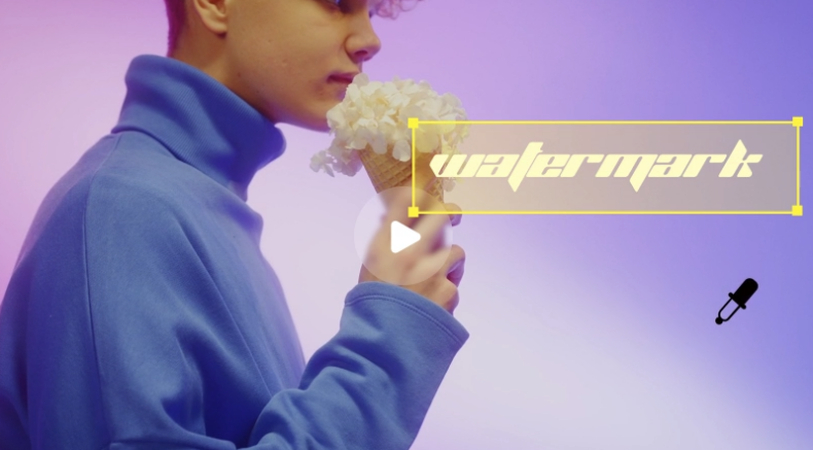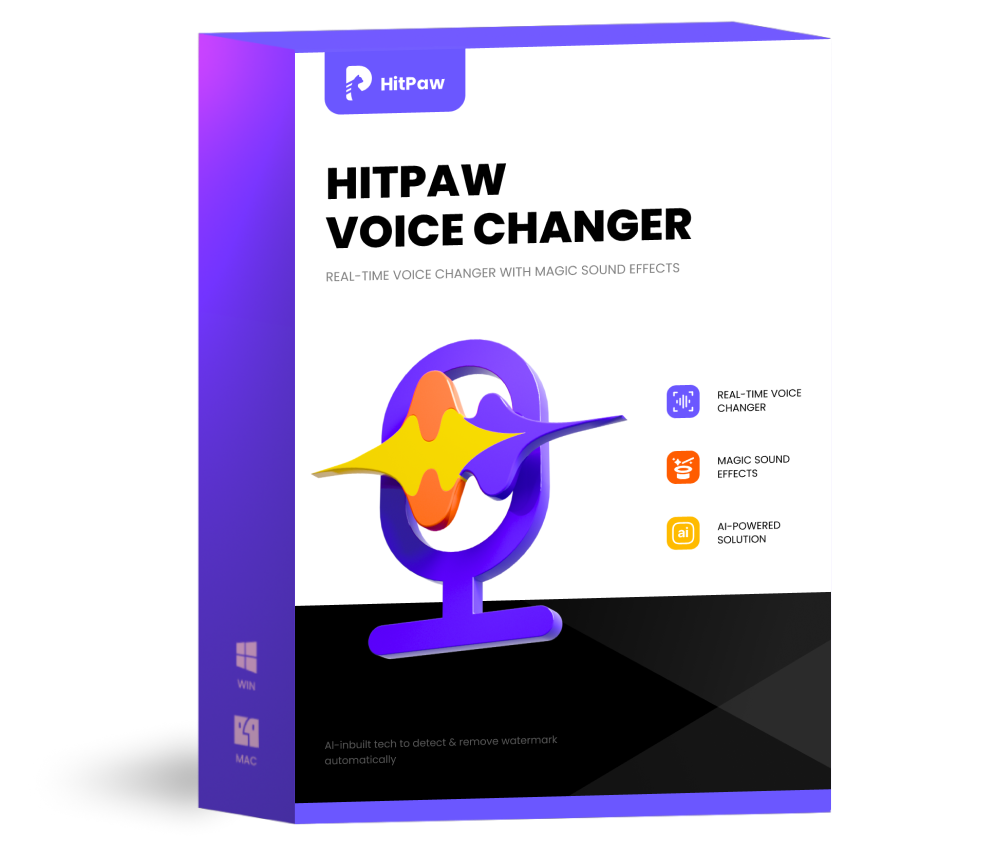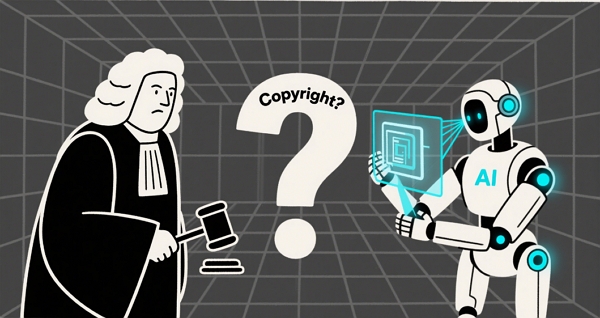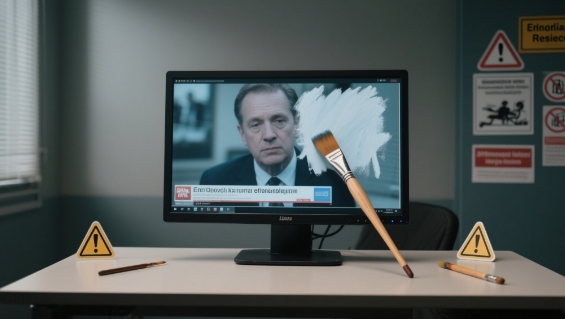Watermark Removal Legal Issues: Is Reposting Content Actually Allowed?
Watermark removal legal issues are becoming increasingly important as tools like HitPaw Watermark Remover make it easier than ever to erase marks from digital content. Many users still wonder: Is it legal to remove a watermark before reposting or using the content for public or commercial purposes? What risks could this create, and how can you stay compliant?
This article breaks down the legality of reposting watermark-free content, clarifies key legal and ethical concerns, and provides practical compliance tips along with a safe usage guide for HitPaw Watermark Remover.
Part 1: Understanding Watermarks and Their Significance
Watermarks are visible or invisible marks placed on digital content to indicate ownership or authorship. They serve several purposes:
- Copyright Protection: Watermarks help protect the original creator's rights by making it clear that the content is copyrighted.
- Prevention of Plagiarism: They act as a deterrent against unauthorized use or reproduction of the content.
- Brand Awareness: For businesses, watermarks can promote brand recognition and ensure that their content is attributed correctly.
- Document Validation: In official documents, watermarks can signify authenticity and prevent tampering.
Removing a watermark without permission can be seen as an attempt to erase the creator's claim to the content, which can lead to legal consequences.
Part 2: Is It Legal to Remove a Watermark — And Repost the Content?

Removing a watermark does not transfer ownership of the content. The original creator retains their rights unless explicitly stated otherwise. Reposting content after removing its watermark can lead to several legal issues:
- Copyright Infringement: In many jurisdictions, removing a watermark without permission is considered a violation of copyright laws. For instance, under Section 1202 of the U.S. Copyright Act, intentionally removing or altering copyright management information is prohibited .
- Legal Penalties: Unauthorized removal of watermarks can result in hefty fines or legal actions. Penalties can include fines up to $250,000 per violation and imprisonment for up to 5 years .
- Platform Violations: Social media platforms and content-sharing sites have strict policies against reposting modified content without proper attribution. Violations can lead to content removal, account suspension, or even legal action from the original creator.
It's essential to understand that just because content is publicly available doesn't mean it's free to use. Always seek permission from the original creator before reposting their content.
Part 3: Compliance Risks in Removing Watermark and Republishing Edited Content

Republishing content after removing its watermark introduces several compliance risks:
- Reputational Damage: Using content without proper attribution can harm your reputation, especially if you're a content creator or business. Audiences and clients value originality and respect for intellectual property.
- Legal Consequences: As mentioned earlier, unauthorized use of content can lead to legal actions, including fines and penalties.
- Platform Policies: Platforms like YouTube, Instagram, and TikTok have algorithms that detect and flag unauthorized content. Reposting edited content can result in demonetization, takedowns, or account bans.
- Ethical Considerations: Even if you have the technical ability to remove a watermark, it's crucial to consider the ethical implications. Respecting the rights of content creators fosters a healthy digital ecosystem.
To mitigate these risks, always ensure you have the proper rights or permissions before reposting any content.
Part 4: How to Use Watermark Remover Safely and Legally
HitPaw Watermark Remover is a lightweight, user-friendly desktop tool designed to help users remove watermarks, date stamps, or other unwanted elements from videos and images. It supports various file formats and uses advanced AI algorithms to ensure seamless background reconstruction after removal. Although the software itself is legal and has legitimate applications (such as editing your own work or fixing formatting issues), how you use the tool determines whether your actions are lawful.
- Ensure Ownership or Permission: Only use the tool on content you own or have explicit permission to modify.
- Avoid Copyrighted Content: Do not use the tool to remove watermarks from copyrighted content without authorization.
- Respect Platform Policies: Be aware of the terms and conditions of the platforms where you intend to post the modified content.
- Avoid Misleading Practices: Do not use the tool to mislead audiences about the origin or authorship of the content.
To ensure you're staying compliant, it's critical to understand both the product's strengths and the appropriate usage scenarios.
- Multiple Removal Modes: Offers options like smooth filling, edge filling, and texture repair to suit different watermark types and backgrounds.
- Support for Both Images and Videos: Works with popular formats such as MP4, MOV, JPG, PNG, and more.
- Batch Processing: Allows users to remove watermarks from multiple files simultaneously, saving time and effort.
- High-Quality Output: Maintains original resolution with minimal visual distortion after watermark removal.
- User-Friendly Interface: No technical expertise required; designed for beginners and professionals alike.
- Cross-Platform Compatibility: Available on Windows and macOS, with no third-party ads or malware concerns when downloaded from the official website.
Safe Use Guide for HitPaw Watermark Remover
Step 1. Import the Video to Remove Watermark
Install HitPaw Watermark Remover, run it and now click at the center of the window to add the video file you want to remove watermark.

You can add mutiple videos or images at the same time or click the Add icon on the top of the main interface to add files. You can switch to another file by click on it.

Step 2. Select the Watermark Remover Mode
There are five watermark remover modes to select: Smooth Filling, AI Model, Gaussian Blur, Color Filling, and Matte Filling. The effects of removing watermark vary from different modes. You can choose the one based on your needs.

Step 3. Remove Watermark Safely and Export Video
Press the Play icon to preview the removing effect during the moving watermark. If you are satisfied, click the "Export" to remove the watermark.

Step 4. Add Watermark to Video (Optional)
HitPaw Watermark Remover also allows you to add customize watermark to the exported video. Click Add Watermark and then you can add text as a watermark by clicking Text button or add an image as your watermark by clicking on Image button.

These features make HitPaw an effective and accessible tool for content creators, educators, designers, and casual users. By using HitPaw Watermark Remover responsibly, you can enhance your content without infringing on the rights of others.
Part 5: How to Legally Reuse Content After Watermark Removal
There are scenarios where removing a watermark and reusing content is legal:
- Ownership: If you created the content, you have the right to modify and reuse it as you see fit.
- Licensing: If you've purchased a license that allows for watermark removal and redistribution, you can use the content legally.
- Public Domain: Content in the public domain is free to use without permission. However, ensure that the content is genuinely in the public domain and not just without a watermark.
- Creative Commons: Some creators release their work under Creative Commons licenses, which may allow for modification and redistribution. Always check the specific terms of the license.
When reusing content, consider the following practices:
- Provide Attribution: Even if not legally required, crediting the original creator is a good practice and shows respect for their work.
- Use Disclaimers: If you've modified the content, include a disclaimer stating the changes made and the original source.
- Keep Records: Maintain documentation of permissions, licenses, or any correspondence with the original creator to protect yourself legally.
By following these guidelines, you can reuse content responsibly and legally.
Part 6: Watermark Removal Legal Issues Explained — Legal and Practical FAQs
Q1. Is it ever legal to remove a watermark from a video or image?
A1. Yes, but only under specific conditions. The most straightforward scenario is when you are the original creator of the content. Another lawful case is when you've obtained explicit permission or a license agreement from the content owner that grants you the right to modify or redistribute the work, including watermark removal.
Q2. What happens if I repost content with a removed watermark?
A2. Reposting content after removing its watermark can lead to multiple consequences, both legal and practical. Legally, you may infringe on the copyright holder's exclusive rights to distribute, modify, or publicly display the work. This could result in: DMCA takedown notices (if posted on U.S.-based platforms like YouTube or Instagram), Legal claims for damages, and account strikes or suspensions on social platforms.
Q3. Can I use HitPaw Watermark Remover for educational purposes?
A3. Yes, but with limitations. If the usage falls within the bounds of "fair use" (U.S.) or "fair dealing" (UK, Canada, and others), such as using modified media for classroom instruction, critique, or academic research, and the audience is private, then it may be acceptable. If you remove a watermark from copyrighted content and share it publicly (e.g., upload to a YouTube channel, blog, or online course), you're likely outside legal exceptions.
Q4. How can I stay compliant when using watermark removal tools?
A4.
To ensure compliance while using HitPaw Watermark Remover, follow these core principles:
Think of watermark removal tools as editing utilities - not tools to bypass copyright.
Conclusion
Watermark removal tools like HitPaw Watermark Remover offer convenience but also raise critical legal and ethical concerns. Users must understand that removing a watermark does not equate to owning the content. Whether you are a content creator, social media manager, or educator, always ensure you have the right to reuse and modify digital materials. By following best practices, providing proper attribution, and using tools responsibly, you can avoid legal pitfalls and build a reputation rooted in integrity.










 HitPaw Univd (Video Converter)
HitPaw Univd (Video Converter) HitPaw VoicePea
HitPaw VoicePea  HitPaw VikPea (Video Enhancer)
HitPaw VikPea (Video Enhancer)



Share this article:
Select the product rating:
Daniel Walker
Editor-in-Chief
This post was written by Editor Daniel Walker whose passion lies in bridging the gap between cutting-edge technology and everyday creativity. The content he created inspires the audience to embrace digital tools confidently.
View all ArticlesLeave a Comment
Create your review for HitPaw articles